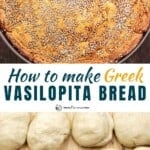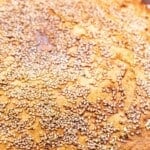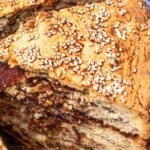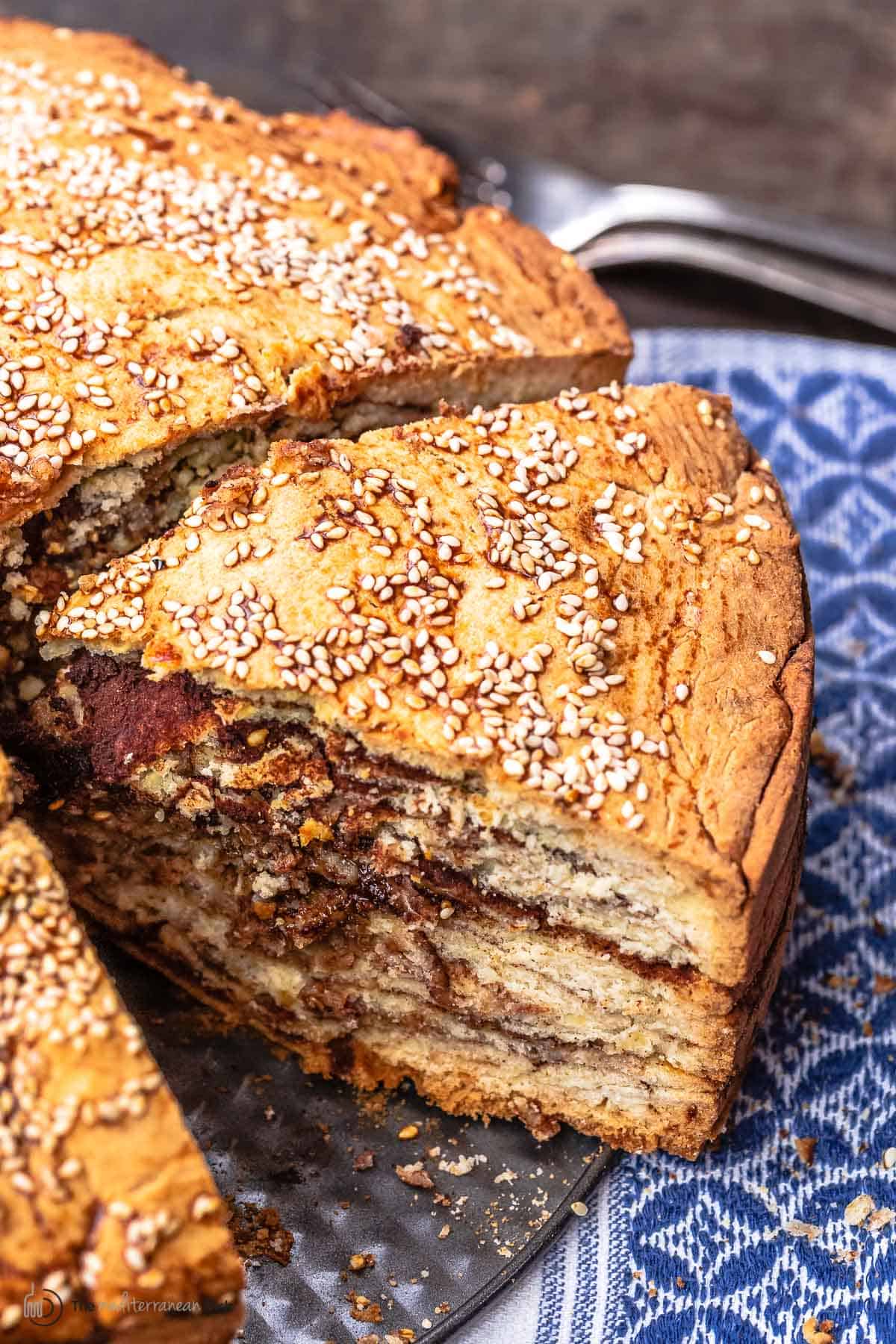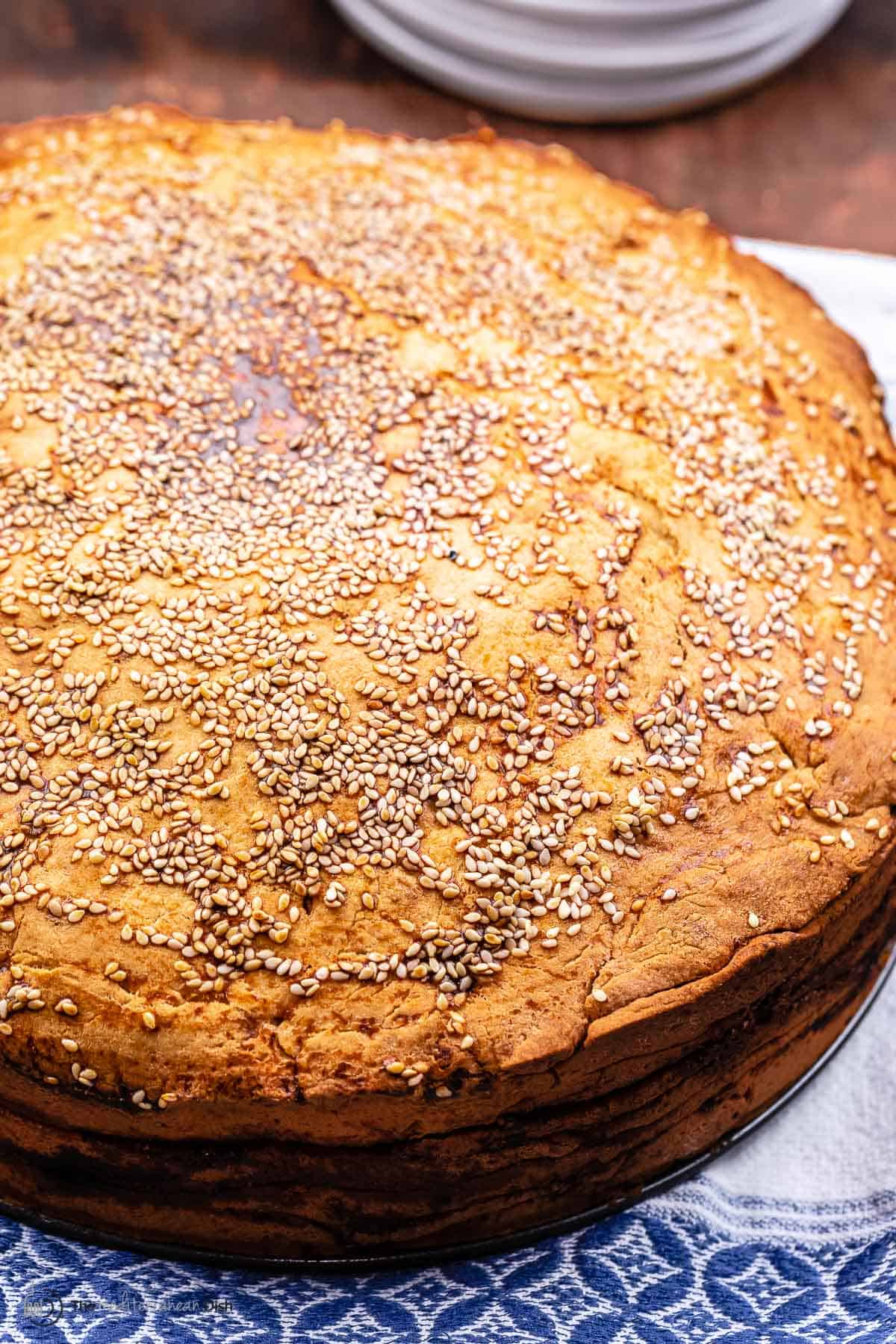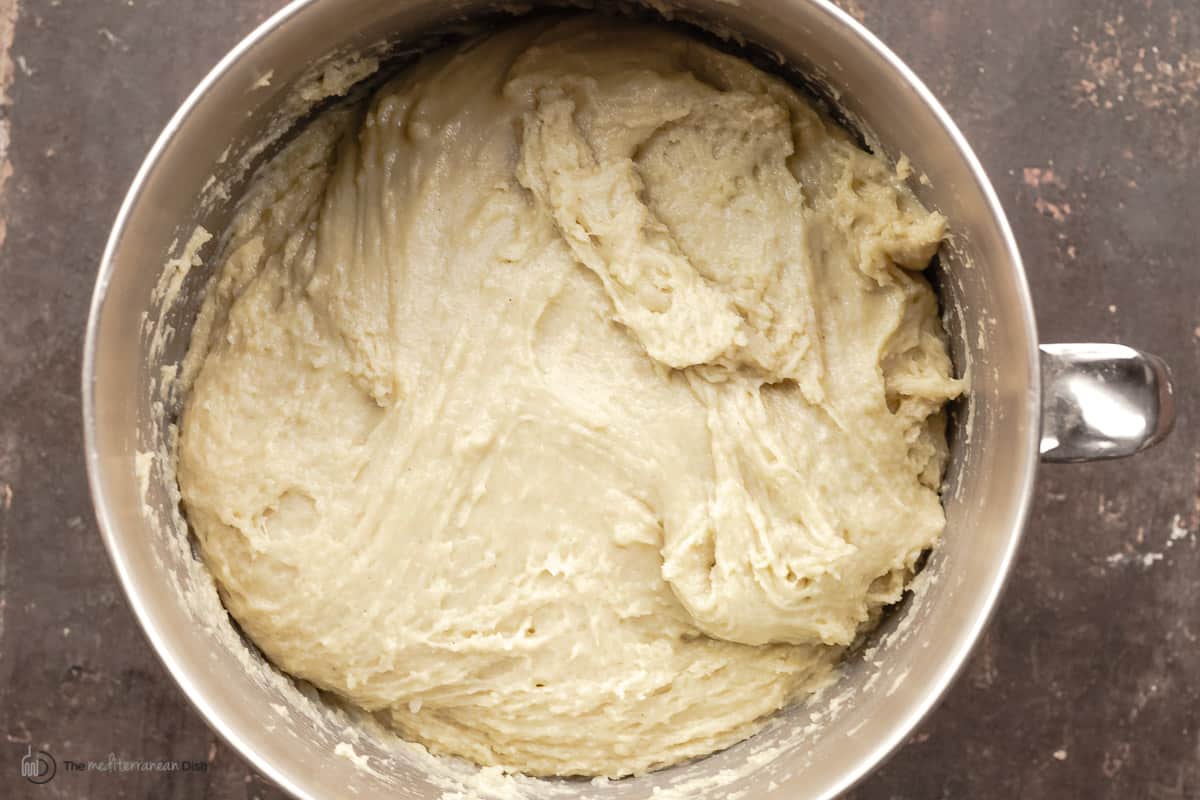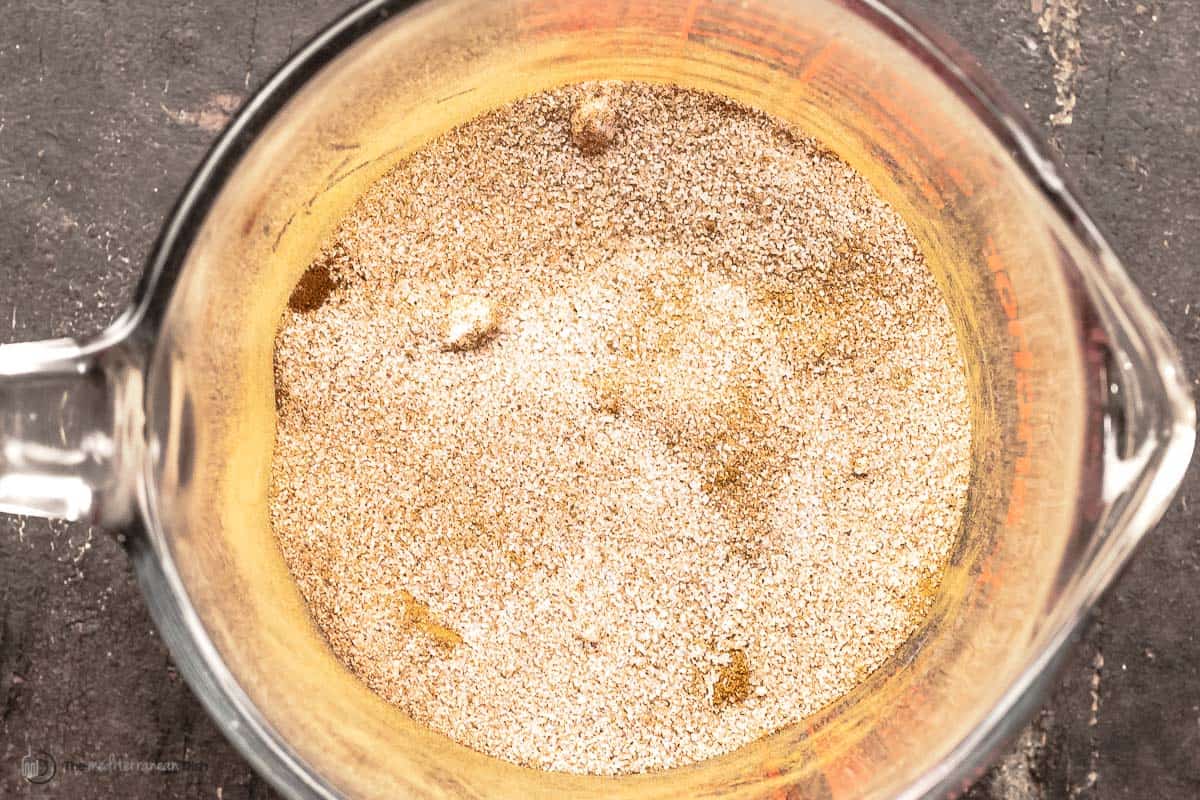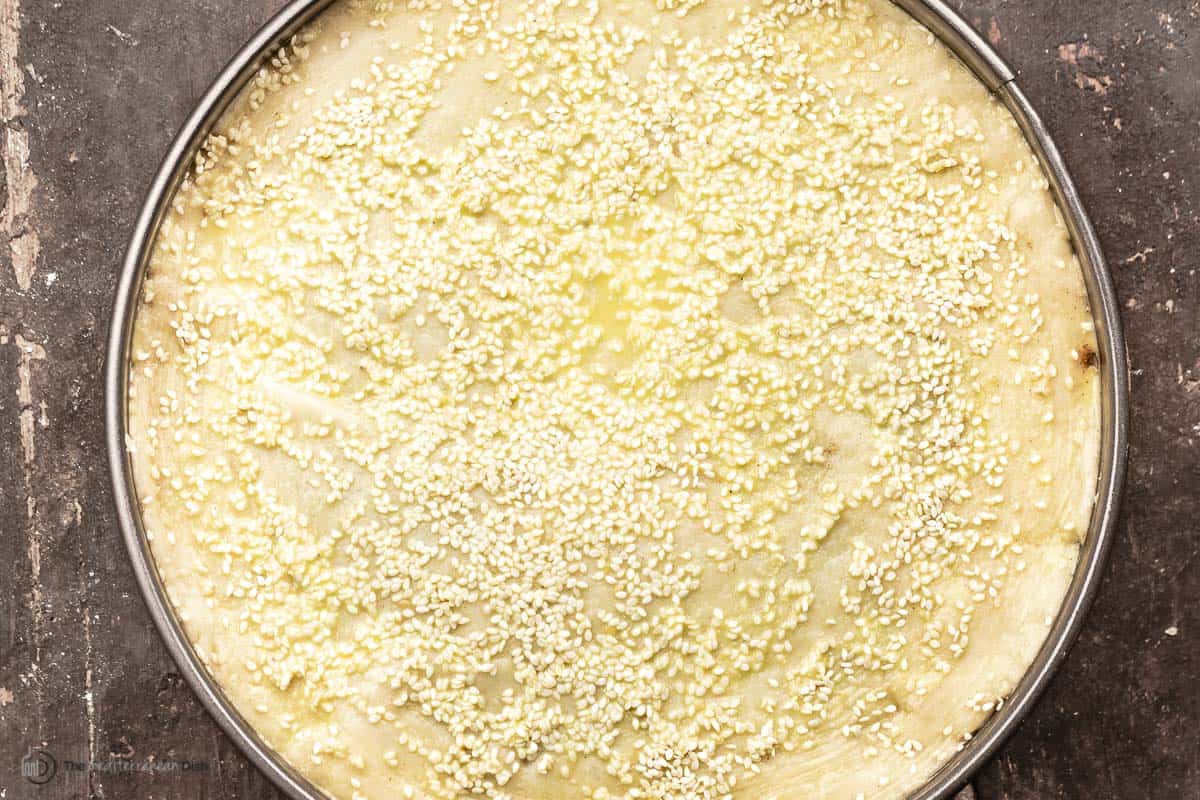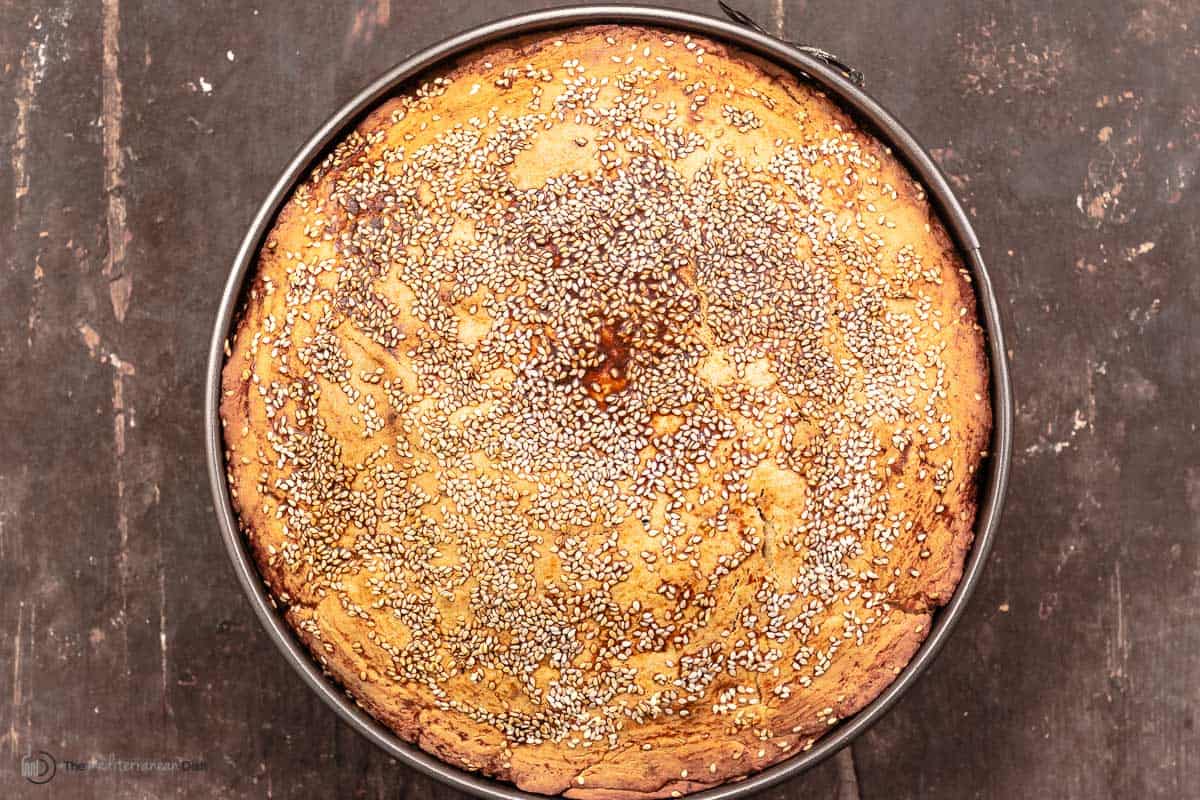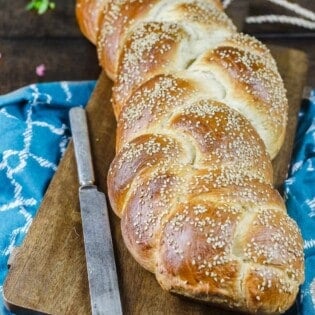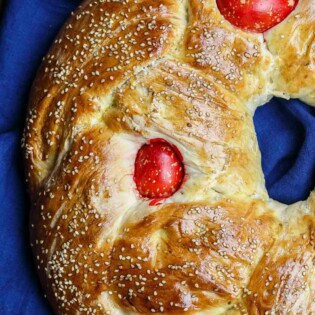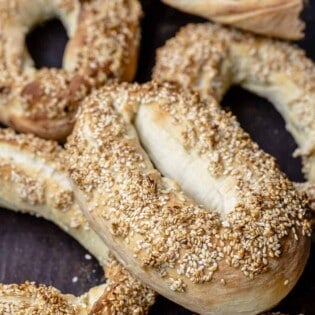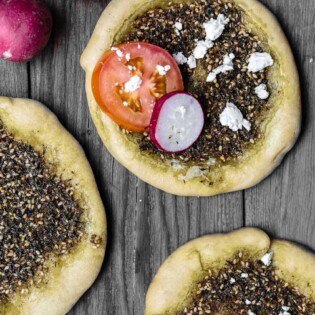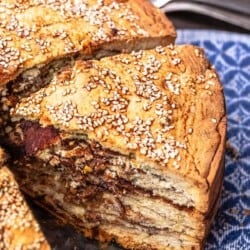A few weeks ago, I asked my readers to share family holiday recipes they cherished. I was thrilled to see Karen Stoeckle’s vasilopita, a Greek lucky New Year’s bread recipe passed down to her through her Greek grandparents Mary and Gregory Matjouranis who moved to the States from Mytilene, Greece as a young couple. Karen grew up with the tradition of making and cutting vasilopita bread every New Year’s Day, and she started making it on her own when she was just 16 years old. I loved hearing that the year she found the lucky coin is when Karen also met her husband! I found Karen’s Greek new year’s bread recipe so unique compared to what I’ve read elsewhere online, and I’m very excited to share it with you!
What is vasilopita?
Vasilopita (pronounced vah-see-lo-pita) is a traditional Greek New Year’s bread (or cake) served at midnight to bring good luck into the new year. This bread is made extra special by the fact that a coin is hidden within it, and the person who finds it is said to have good fortune for the whole year ahead!
About this New Year’s bread recipe
There are variations of vasilopita. Some are sweet cake recipes, while others are more of a bread. This recipe from Karen’s Greek grand parents is a bread recipe made of thin layers of dough, flavored with sweet and savory flavors from a cinnamon and sugar mixture and grated Romano cheese, which is a unique twist (you can omit the cheese if you’re looking for a sweet bread). Decorating vasilopita also varies from one family to another. Some dust the vasilopita generously with powdered sugar, while others finish it with a sugar glaze or a sprinkle of pomegranate or sesame seeds (as in today’s recipe).
The ritual of cutting and serving vasilopita
Traditionally, vasilopita is meant to be made and served at midnight on New Year’s! There is a bit of religious component when it comes to slicing and serving this special bread—the first two slices being for Christ and Mary, the third being for the house to bless it. The remaining slices are shared among the hosts, other family members, and guests (from oldest to youngest).
About the lucky coin!
Everyone who receives a slice of vasilopita has a chance of finding the coin, which can be gold or silver plated. There are coins made specifically for vasilopita, but as I do not have any of those, I used a quarter (which I wrapped in foil before inserting into the bread dough before baking). Saint Basil is said to have started the lucky coin tradition over 1,500 years ago, as he would hide jewels and coins inside bread for the poor.
Ingredients – what you need to make this recipe
Granulated sugar – for the dough and for the cinnamon-sugar mixtureBaking powder – to help the vasilopita riseExtra virgin olive oil – use good EVOO to avoid any bitterness transferring to your doughRomano cheese – grated and divided, for savory flavor. If you want your bread to be more on the sweet side, you can omit the cheese and use only the cinnamon and sugar mixtureGround cinnamon – a little goes into the dough, and ½ cup is needed for the mixture that is sprinkled between layers of doughAll-purpose flour – you need a whopping 10 cups, plus more for dustingWarm water – warm water is easily absorbed by flour, resulting in a smoother doughButter – needs to be meltedEgg yolk – you can discard the whiteSesame seeds – to sprinkle on top of the vasilopita right before bakingGround cloves, allspice, and nutmeg – these warming spices go into the sweet, warming cinnamon mixture that is sprinkled between the layers of vasilopita dough
How to make vasilopita
Making this special New Year’s bread recipe takes a bit of time, but the work is worth it when you slice into delicious bread with family and friends at midnight. Here is how to make it (print-friendly recipe with ingredient measurements below).
Make the dough. Fit a stand mixer with the whisk attachment and grab the mixer’s largest bowl. Add 2 ½ cups sugar, 2 tablespoons baking powder, 1 cup extra virgin olive oil, 1 cup grated Romano cheese, and 2 ½ cups warm water. Whisk on low to combine. Once combined, replace the whisk with the hook attachment and turn the speed to medium-low. Add the flour, 1 cup at a time. Then knead for around 5 minutes until the dough is workable. I used a wooden spoon instead of my hands because the dough is VERY sticky. Cover the dough with a towel and set aside.Make the cinnamon mixture. In a medium mixing bowl, mix ½ cup ground cinnamon, 1 cup sugar, ¼ teaspoon ground cloves, ½ teaspoon allspice, and ½ teaspoon nutmeg. Set this aside as well.Assemble the vasilopita. Lightly grease the bottom of a round 10-inch springform pan. Flour your hands, and divide the dough into 11 equal portions. Form the pieces of dough into balls (each about the size of a baseball), and place the balls on a floured surface to prevent them from sticking. On another floured surface, roll each ball of dough into a 10-inch round with a rolling pin. The round will be quite thin. Place the rolled dough into the springform pan and brush with melted butter. Sprinkle generously with the cinnamon mixture, followed by a generous sprinkle of grated Romano cheese. Repeat this process for two more layers of dough.Add the coin and continue to layer. If you want to keep with tradition and add the coin, be sure to wash and dry it well. Wrap it in a small piece of foil, and place it on the topmost layer of dough. Continue to layer the dough with 7 more rounds, making sure to brush each layer with butter, and to sprinkle with the cinnamon mixture and grated cheese. The last layer will be treated a little differently. After placing it on the very top, DO NOT sprinkle with the cinnamon mixture or cheese. Instead, make an egg wash by whisking 1 egg yolk and 2 tablespoons of water or milk. Brush the last layer of dough with a bit of melted butter and the egg wash. Sprinkle with sesame seeds. I used about 3 tablespoons, but you can use less depending on your preference. You could also omit the sesame seeds, and use another topping, such as almonds, powdered sugar, or dried fruit.Bake the vasilopita. Arrange a rack in the middle of the oven and bake the Greek New Year’s bread in a 350 degrees heated oven for 1 hour and 45 minutes. It will be a rich golden-brown color. Let it cool for a few minutes before moving it to a wire rack, and allow it to cool completely on the wire rack before you slice it.
Tips for success
Vasilopita dough can be sticky, so I recommend lightly flouring your work surfacesFor a sweeter bread, omit the Romano cheese and only use the cinnamon-sugar mixture.Use a springform baking pan: This will make removing the layered bread easier after baking.If using a coin, wash and dry it, then wrap it in a piece of foil. I used a quarter, but any coin will do. Just be sure to tell your guests that one of them may have a coin in their slice of bread to avoid any possible tooth damage!
How to serve it
Vasilopita is typically eaten plain, but I loved adding some honey over mine! Vasilopita is made to be shared amongst family and friends right at midnight on New Year’s. And if you want to follow the religious tradition as mentioned earlier, then the first couple of slices are saved for Christ and Mary. From there, simply serve everyone from oldest to youngest. Each person who gets a slice stands a chance to find the lucky coin!
Leftovers and storage
This bread can be stored in an airtight container at room temperature for 3 to 5 days. If you prefer it warmed up, reheat it in a medium-heated oven for a few minutes.
Other bread recipes to try
Hungry for more? Browse more Mediterranean Recipes.
Easy Challah Bread Recipe
Easy Greek Easter Bread Recipe (Video)
Easy Homemade Jerusalem Bagels
Za’atar Manaqish Recipe
Visit Our Shop
